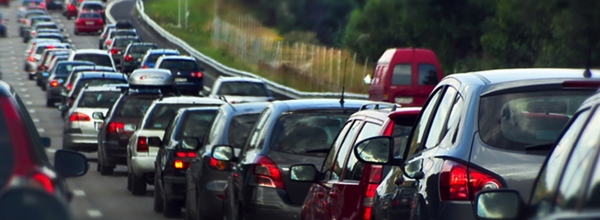Outdoor Advertising Research - Poland and the World
Planning an outdoor advertising campaign in Poland is a bit like throwing darts at a target blindfolded.
You more or less know where the target is, and some of the darts will probably hit it. A significant portion, however, will likely miss.
It's half the battle if we know how many people travel a given road section per day where a billboard is located. We can always try to determine at least the gross audience. Such data is provided, for example, by the Traffic Measurement, which is carried out every five years on behalf of the General Directorate for National Roads and Motorways. The last measurement took place in 2010.
New studies will be conducted next year and will show how the traffic intensity map has changed after the construction of many sections of expressways, motorways, and city bypasses – this measurement concerns national and international roads.
As for city streets, the matter is more difficult, as it is very hard to access traffic intensity studies here. At most, one can measure car traffic in a given location oneself,
on similar principles as in the case of the GDDKiA Traffic Measurement.
Perhaps soon we will see the publication of the results of the first part of the research conducted by the Institute of Outdoor Research. It was established by the three largest outdoor advertising companies - AMS, Clear Channel Poland, and Ströer Polska. As the Wirtualnemedia.pl portal writes,
Travel Survey research is currently underway in ten Polish agglomerations, conducted on a group of 5,000 respondents who were equipped with devices using satellite navigation and GSM systems to record the routes they travel. The travel routes of
4.5 thousand people will be recorded for two weeks, and 500 for four weeks. As a result, a full description of outdoor advertising recipients will be created, divided into target groups, based on any set of characteristics, including consumption and lifestyle.
This stage of research is expected to be completed in February 2015.
The Institute of Outdoor Research conducts its studies based on a license from the British organization Route. This organization – unlike the Polish IBA – brings together not only the largest outdoor advertising companies but also media specialists and media houses. The Route study, introduced in 2013, replaced the previously used Postar model, which had been in operation since 1996. Route consists of elements such as: Travel Survey (shows how people move around the country), Traffic Intensity Model (studies of car and pedestrian traffic intensity), eye-tracking studies (a model allowing to assess the probability of seeing an advertisement depending on the type of advertising medium, taking into account its format, position relative to the observer, and distance from the observer), Inventory Mapping System (a database of advertising media and their distribution in the UK, provided by a trade organization, which is the equivalent of our Chamber of Outdoor Advertising).
For 75 years, the DEC – Daily Effective Circulation study – was in force on the American market.
Its result determined the number of people who passed a given billboard while driving. The study assumed that everyone who passed the advertising board saw it. However, it was not known
how many people actually saw it, or who those people were.
In 2010, a new study, TAB Out of Home Ratings, was introduced. It is carried out by the Traffic Audit Bureau for Media Measurement Inc. – an organization founded in 1933. The new study measures not only how many people pass a given billboard, but also how many of them saw it and who they are. This system is not perfect – it does not survey every billboard in the USA (it covers 80-85% of the market), yet media planners and buyers, as well as outdoor advertising companies, agreed that it is a big step forward compared to DEC. This system allows for the comparison of outdoor advertising with other media. It enables the definition of 240 demographic segments such as age, gender, race, income level, etc.
An element of TAB, similar to the British Route, also includes eye-tracking studies that allow for determining contact time with an advertisement down to fractions of a second. Studies on the speed of cars passing the advertising medium were also taken into account. TAB also uses demographic data from population censuses provided by the U.S. Census Bureau.
Both Route and TAB have significantly changed the outdoor advertising industry in the UK and USA, respectively. Outdoor has become a medium that sells the audience reached by an advertising campaign, rather than the location where the advertisement is placed. Since these studies appeared, it has become possible to compare them with studies of other media. This allows media planners
and marketers to assess the true power of outdoor, which they previously intuitively believed in.
One can only hope that it will be similar in Poland. For now, the research is ongoing and concerns only the 10 largest cities in the country.
We do not yet know the completion date. We also do not know the details of how other companies from the OOH industry will be able to join IBO.
How costly will membership be?
Will smaller companies even be able to afford it, considering how difficult our market is?
With such rapidly developing technology, will it not turn out after some time that similar data can be obtained much cheaper from another source, and continuously?
Forecasts regarding the development of mobile technologies indicate that by 2020, each of us will be constantly online via devices such as smartphones or tablets. Perhaps by then, instead of buying research from IBO, it will be enough to just open Google Maps?

